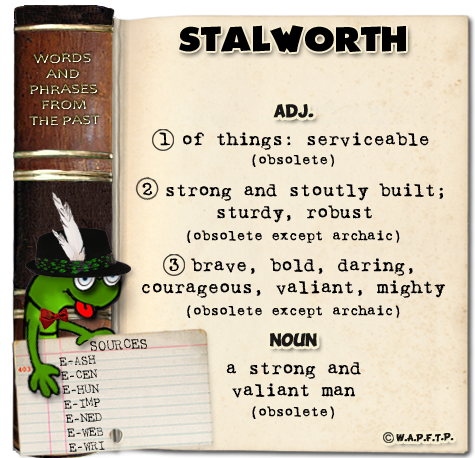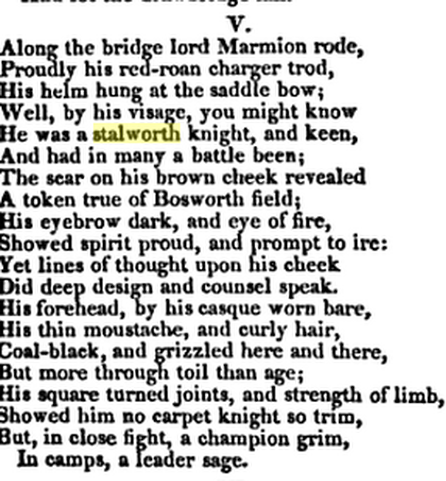|
(see below for forms) CLICK HERE FOR KEY TO SOURCES ETYMOLOGY from E-NED: Old English stǽlwierðe, from stǽl place + wierðe worth (adj.) The length of the vowel in the first syllable seems to be authenticated by some of the early Middle English forms; the shortening of ǽ to ă in the first element of a compound is normal. The Old English stǽl(the quantity of which is certain from the three occurrences in poetry) appears not to be immediately connected with the synonymous stæl with short vowel (dat. stale); according to some scholars it represents a contraction of Old Teutonic *staþl- or *stađl-, the relation of Old English stǽl to staðol foundation being considered parallel with that of mǽl speech to the synonymous mæðel. The 13th century form staðelwurðe, occurring only once strongly confirms this view. The early Middle English forms with medial e, stele-, steale-, stalewurðe are difficult to account for. EXAMPLE From: The Poetical Works of Sir Walter Scott: With a Sketch of His Life By J.W. Lake, 1838 Marmion - A Tale of Flodden Field Canto I The Castle also in the following forms: (from E-NED):
α. 1 stǽlwierðe, -wyrðe, 2 stele-, 3 stealewurðe; 3 stalwarþe, 5– warth; 3 stalewurðe; 3–4 stalwrthe; 3–5 stalworþe, 4–6 -worthe, (5 staloworth), 6 stalwoorth; 4–5 stallworthe, stalwurþe, -wurthe, (5 stalwort), 4–7, 9 arch. stalworth. β. 3–5 stalword(e. γ. 3–5 stalwarde, 3 stalewarde, 4, 6, 8 Sc. stalward. δ. 3 staðelwurðe.
0 Comments
Leave a Reply. |
Archives
September 2021
|

